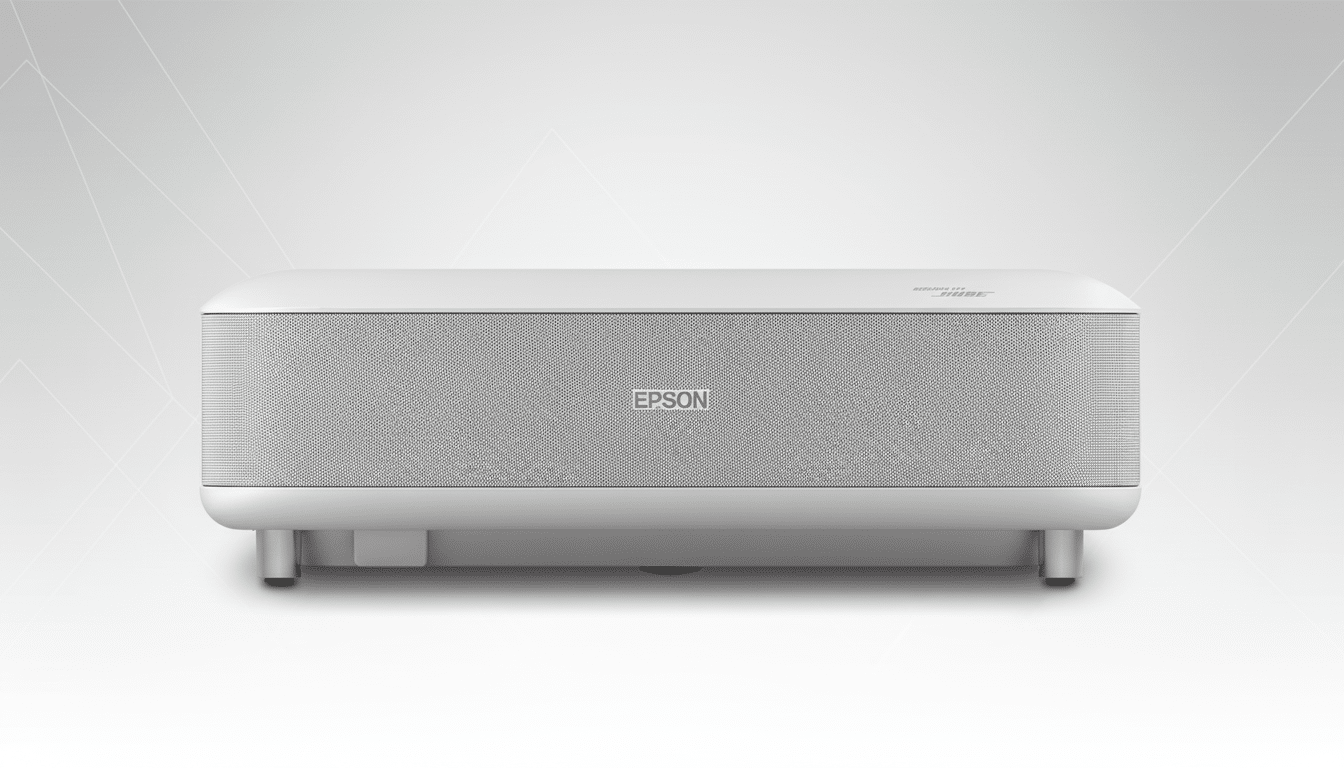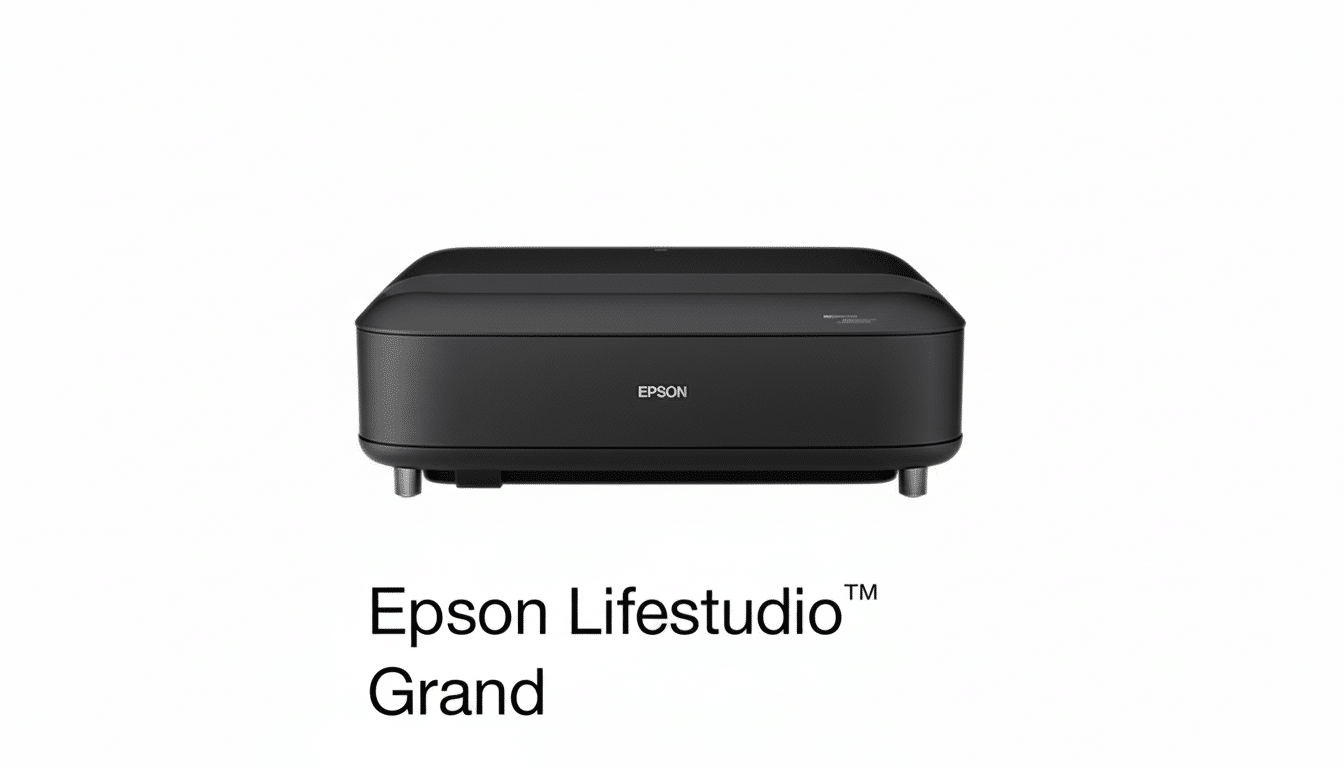Epson’s new Lifestudio range just received its biggest discount yet, making Bose-tuned audio and built-in Google TV far more affordable on all versions of the series. Discounts of up to $500 are surprising for a series that arrived just last year — and which has been advertised as the first projector line with Sound by Bose preinstalled out of the box.
The collection covers all types, ranging from a small carry-anywhere model to an ultra-short-throw flagship designed to replace a living room television, with each powered by Google’s content-forward interface and full compatibility for major streaming applications. For buyers who want to bring some big-screen cinema flair into their homes without having to wrangle external streaming sticks, Bluetooth speakers, or retailers’ fickle supplies of these two hot-ticket items, the deals are arriving at the right time.

The standout deals across Epson’s Lifestudio lineup
Epson’s ultra-short-throw centerpiece, the Lifestudio Grand, falls to $2,199.99 from $2,699.99 (a $500 chop that puts the top-end model at a new all-time low). It throws up to a 120-inch 4K PRO-UHD HDR10 image from the wall you sit next to, rated at 3,600 lumens of both white and color brightness and enough output for UST units to be a good choice in brighter rooms. That’s approximately 19 percent off the flagship.
On the portable side, the Lifestudio Flex Plus drops to $849.99 (from $999.99), combining 4K PRO-UHD with 1,000 lumens and Auto Low Latency Mode for gaming. The standard Lifestudio Flex slides to $779.99 from $849.99, pumping out Full HD with a tiltable stand and ambient lighting in a less-than-utterly-massive package.
The Pop models in smaller sizes are also at an all-time low. The Lifestudio Pop Plus is $749.99 (down from $799.99) and brings 4K PRO-UHD and ALLM to the Pop range, while the entry-level Lifestudio Goplay falls to $629.99 (from $679.99). Each emphasizes easy placement and grab-and-go movie nights.
Why Bose tuning and built-in Google TV really matter
Audio has long been the Achilles’ heel of portable projectors, which have typically been equipped with smallish drivers incapable of providing crisp dialogue and that often don’t even attempt low-end punch. With its licensing of Sound by Bose, Epson is leveraging the brand’s tuning and DSP expertise to offer more balanced audio that can hold its own for casual viewing. And while they won’t best a pair of external speakers, they come closer than ever before, allowing those short on space an alternative that doesn’t require more gear.
On the software front, Google TV brings search, recommendations, and profiles together for all of the popular streaming services, with first-party integrations from Netflix, Disney+, Hulu, Prime Video, and YouTube. That’s not just a nice extra: dozens of projectors come with stripped-down operating systems or app certification that is far from comprehensive, so workarounds become necessary. With Google TV built in, those boxes act more like a new smart TV with voice commands and unified content than a mere projection gadget.
Brightness, picture technology, and display performance
Epson’s 3LCD architecture achieves high-quality images with equally high White and Color Light Output for vivid colors and bright images, even in daylight, and three times brighter colors than leading competitive projectors.

The Grand’s 3,600-lumen light-output rating puts it well ahead of many lifestyle UST competitors in this price range and falls in line with advice from the projection experts we interviewed that you want something a step up from 3,000 lumens for 100-to-120-inch images in mixed ambient light. The 1,000-lumen portable Flex Plus is a better match for dim rooms or nighttime viewing, where its 4K PRO-UHD pixel-shifting can get its shine on without getting washed out.
(It’s worth noting that Epson’s 4K PRO-UHD utilizes high-speed pixel shifting to show a 4K signal on a non-native 4K imaging array — an approach shared by most other projectors in this class that nonetheless does well at resolving fine detail for movies, sports action, and games.)
HDR10 on the Grand injects more pop into highlights, and ALLM across all “Plus” variants prioritizes low input lag when consoles are detected.
Who should (and shouldn’t) buy each Epson Lifestudio model
If you just want to replace a TV in a main room, the Lifestudio Grand is the easy choice. The ultra-short-throw design displays 100–120-inch images just inches away from the wall to project rich, vivid visuals while you’re sitting close to the action (the UST design reduces the need for a ceiling mount and works well in shaded interiors). Using a screen that rejects ambient light can make the daytime upgrade even better and is often suggested by reviewers and integrators.
For apartments, dorms, and spare rooms, the Flex Plus provides the most flexible combination of portability, brightness, and 4K processing for its newly discounted price. If you’re good with just Full HD, and style-focused design touches — including a tilting stand and ambient lighting — grab your attention, the regular Flex is great value. The Pop and Pop Plus are the most baggable for last-second movie nights; upgrading to the Pop Plus nets 4K PRO-UHD and superior gaming readiness.
Given the seasonality of these models, $500 off across the line is uncommon. With Google TV baked in (and tuning by Bose) and a spread of sizes that span travel-friendly to home-theater-ready, these are not just discounts but meaningful markdowns — and an opportune time to go big-screen without the usual mess of accessories.

